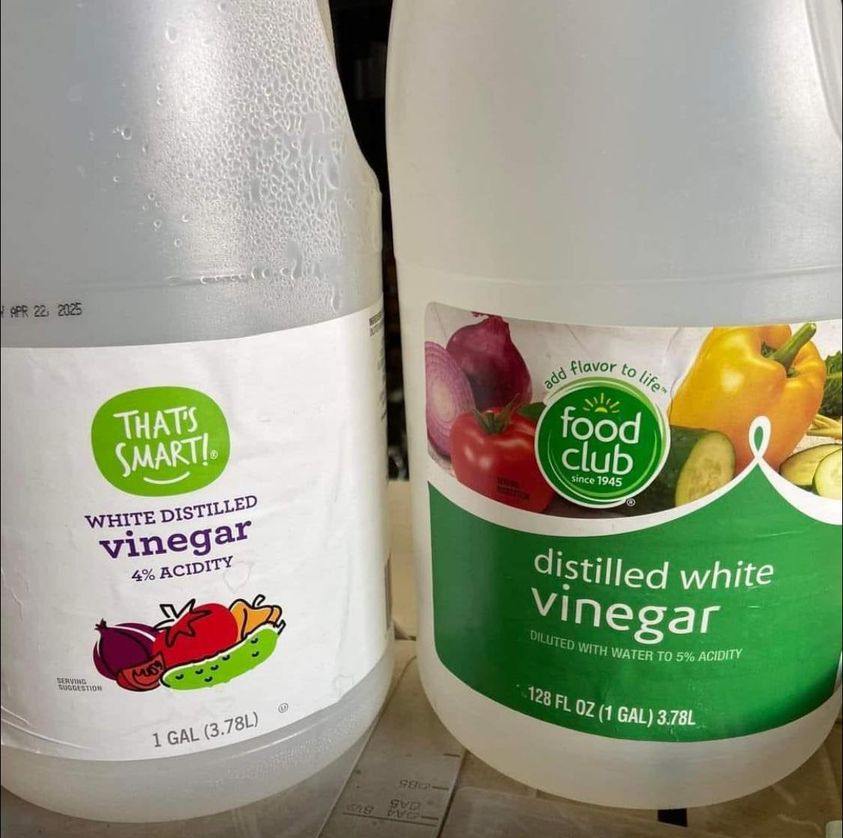🧑🍳 Instructions:
- Sterilize jars in boiling water or dishwasher. Keep warm.
- In a saucepan, combine vinegar, water, and salt. Bring to a boil.
- Pack cucumbers tightly into jars with garlic, dill, mustard seeds, and optional spices.
- Pour hot brine over cucumbers, leaving 1/2 inch headspace.
- Wipe rims, apply lids and bands.
- Process in boiling water bath for 10 minutes (adjust for altitude).
- Let jars cool undisturbed for 12–24 hours. Check seals.
🧠 The Vinegar Label Revolution
This year, brands like “That’s Smart!” have introduced 4% acidity vinegar—often without bold warnings. It’s easy to miss, especially when the packaging mimics traditional 5% bottles. Some labels even feature vegetables and suggest culinary use, misleading consumers into assuming it’s suitable for pickling.
Meanwhile, trusted brands like “Food Club” still offer 5% vinegar, clearly labeled. But vigilance is now essential. Before you pickle, pause. Read. Confirm.
📣 The Canning Community Speaks
Across Facebook groups, Reddit threads, and homesteading forums, seasoned canners are sounding the alarm. Posts warn of ruined batches, wasted produce, and the heartbreak of tossing jars that were lovingly prepared but unknowingly made unsafe.
One user writes:
“I’ve canned for 20 years and never had to check vinegar labels. This year, I almost used 4%—thank goodness someone posted a warning!”
Another adds:
“It’s not just about taste. It’s about safety. Botulism doesn’t forgive.”

